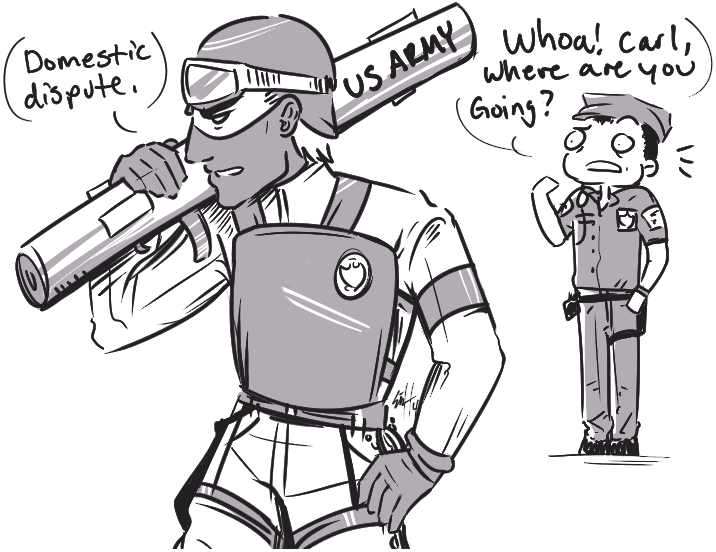The August riots in Ferguson, Missouri, brought to light, among other issues, the question of whether surplus military equipment should be made available to community police departments. This question is exacerbated by the fact that agencies receiving equipment under the “1033 program” must use it within one year of receipt.
The problem with the 1033 program is the fundamentally different goals and objectives of police and military. While some military peacekeeping forces may serve in more of a police capacity, the fundamental objectives of police officers and military are different.
Police are hired to service a community of constituents who are, by law, innocent until proven guilty. The first principle in Sir Robert Peel’s ideals for an ethical police force (written almost two centuries ago) is “to prevent crime and disorder, as an alternative to their repression by military force …” The idea that the police were meant to be an alternative to the military is not just symbolic. The founding fathers understood this when they wrote in the Declaration of Independence that “… Governments are instituted among Men, deriving their just powers from the consent of the governed …” In the same document was a criticism of standing armies, which were understood to create a disparity in power that could easily trample over that consent.
In more practical terms, many people will point to the worst incidents of violent crime as examples of why police departments should receive military-grade armament. This is a good opportunity for society to ask itself why, for instance, we continue to criminalize many recreational drugs, a prohibition that continues to provide organized crime a lucrative commodity. A moderate approach to the legalization of drugs would undercut one of the staple commodities of organized crime, and would almost certainly lead to a decrease in violent crime.
Nine days after the shooting of Michael Brown, Missouri Governor Jay Nixon called in the Missouri National Guard to help restore peace and order. This was the right thing to do for two reasons: because the civil unrest had reached a point where a military response was appropriate, and because the military has far more training and experience in the use of military grade armament. There is a clear line between the need for a police response and the need for a military response, and this line should not be blurred by providing the police with military armament that they are neither trained to use, nor charged with the use of in their duties.
Few people dispute the need for police officers to be armed, and the use of force among the police will sometimes be necessary to restore law and order. The events in Ferguson are a clear illustration of the need for a clear line between the police and the military. Now that relative calm has been restored to Ferguson, its leaders would do well to closely examine the “consent” of the people they govern to ensure that the people are, in fact, in agreement with the civil contract that their police officers have sworn to uphold and protect.











